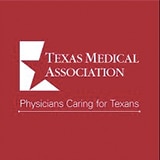Primary Care Physician Denton, TX
Denton Family Practice Clinic is primary care clinic located in Denton, TX. Serving Denton, Argyle, Sanger, Corinth, Little Elm, Aubrey, Ponder and Krum for more than 30 years.
Philosophy
Our medical philosophy is to treat the whole patient through both diagnosis and education, helping to provide patients with the tools and treatment they need to prevent disease and reverse negative health impacts.
Accept Insurance
We accept all major Insurances including Medicare, Aetna, Humana, Cigna, Ambetter, Oscar and Blue Cross Blue Shield.
Primary Care Physician Denton, TX
Welcome to Denton Family Practice Clinic
We are a focused, dedicated, true ‘one-stop shop’ medical home, with a goal of providing comprehensive health care in the Dallas area designed to treat your physical, emotional, and mental health holistically.
We believe in offering Quality care & Medical Excellence. See yourself by clicking below.
Best Primary Care Physicians and Family Doctors. Click Here.
We are a team of medical practitioners who focuses on disease prevention and overall wellness.
General Services
Tele-visit/Virtual Visit
Evaluate, Diagnose and Treat patients online while saving them a trip to ER, Urgent care of Doctor’s office. Who understands your healthcare needs more than your own Primary Care Physician
Family Medicine
Primary Care Clinic or Family Clinic is your doorway to comprehensive medical care for your entire family – from newborns to seniors.
Immunizations
This service can provide you with many of the common vaccines including those required for immunization records
Women’s Health
These services offers routine health checkups, Birth Control management, PAP smears and referral for specialty conditions as and when necessary
Additional Services
Laboratory tests play a critical role in ensuring your diagnosis is accurate and your treatment is appropriate.
- Diabetes Management
- Tele-visit/Virtual Visit
- High Blood Pressure
- High Cholesterol Management
- Thyroid Treatment
- Allergy Testing and Treatment
- PrEP & HIV Prevention
- Bioidentical Hormones and Testosterone pallets therapy
- ADHD, Depression and Anxiety Care
- US Immigration Physicals
- Sleep Apnea Testing
- Sports/Pre-participation Physicals
- DOT Physicals

Welcome to Denton Family Practice Clinic
Meet Dr. Parmar
We are pleased that you have chosen to explore what we have to offer at Denton Family Practice Clinic
Medical Education
• MBBS. Medical School – Dayanand Medical Collage, Ludhiana, India
• MD. Research Medical Center, Residency in Family Practice
Board Certification
• American Board of Family Medicine
Professional Affiliations
• Baylor Scott & White Medical Center, Waxahachie, TX
• SouthWestern Health Resources
Social Professional Profiles
• Healthgrades
• WebMD
• Share Care
• CareDash
Patient Information
During business hours, please call our reception staff. Alternatively you may book your appointments online on our website or requesting through patient portal 24/7. Every effort will be made to accommodate your preferred time and choice of practitioner.
Please fill the “Release of information” form at the office where you would like to record to be faxed over so they can request from our office. Alternatively, you can also sign up for patient portal to access your labs results, medication list and radiology results.
A provider may charge for the reasonable costs for copying and mailing the records. The provider cannot charge you a fee for searching for or retrieving your records.
You can call our office during business hours or fill out medication refill request form or sign up for patient portal anytime of the day
Special Offers




Cost As Below
• Age Under 65yr: $30
• Age Above 65yr: $60

Do you have any more Questions?
We`re currently accepting new patients! We believe in providing the best possible care to all our existing patients and welcome potential patients to call us if they have any more questions.









